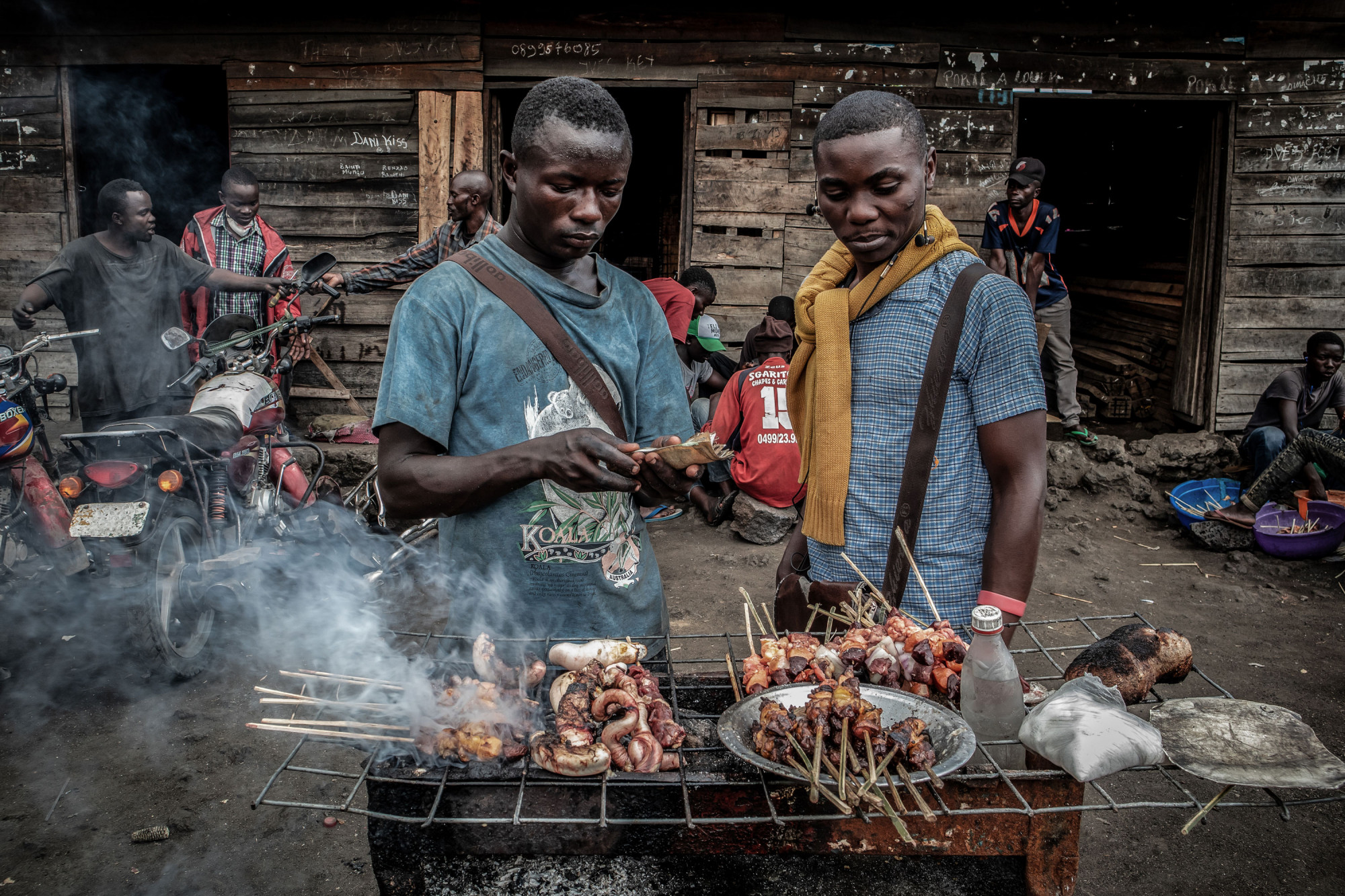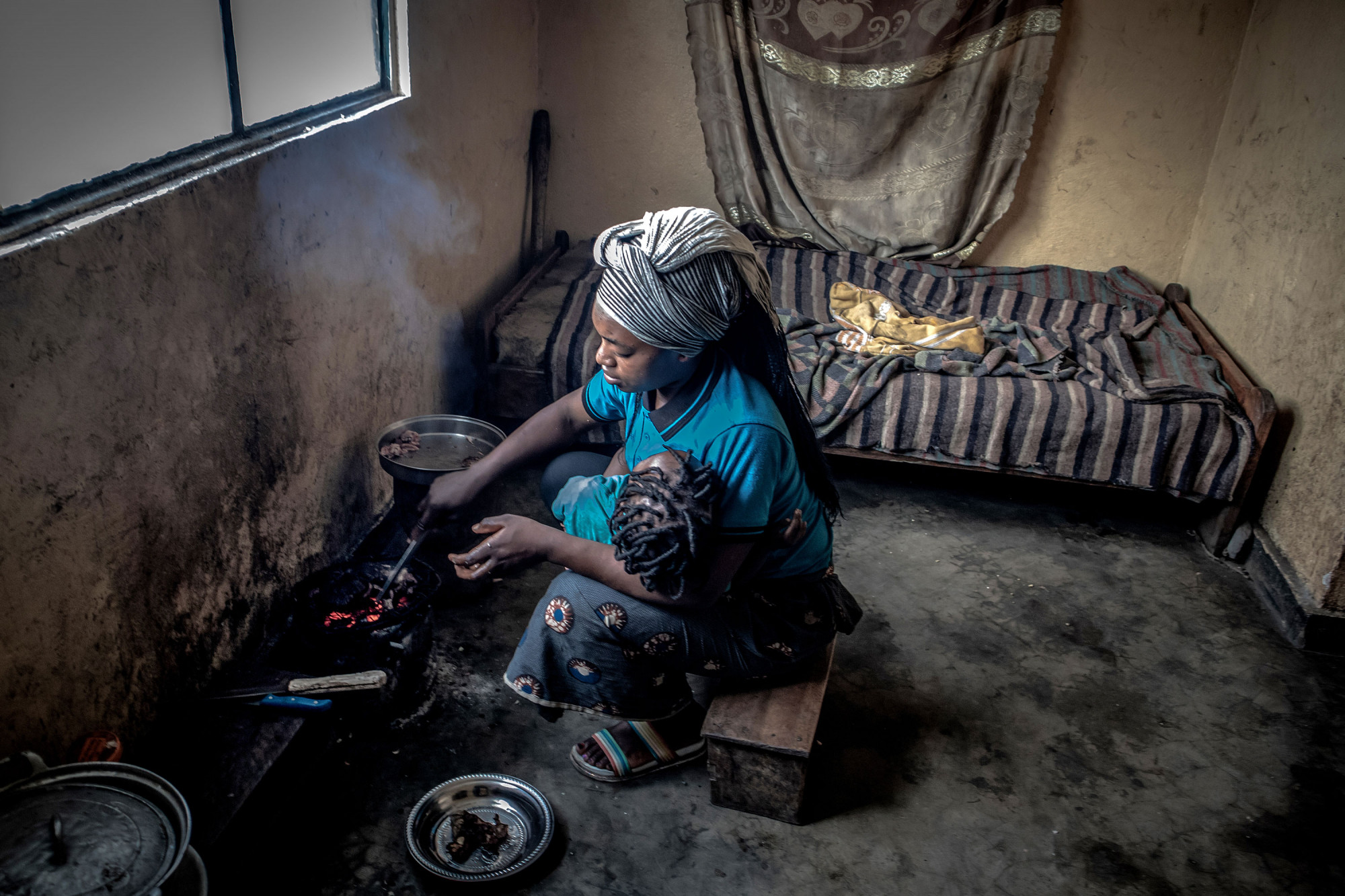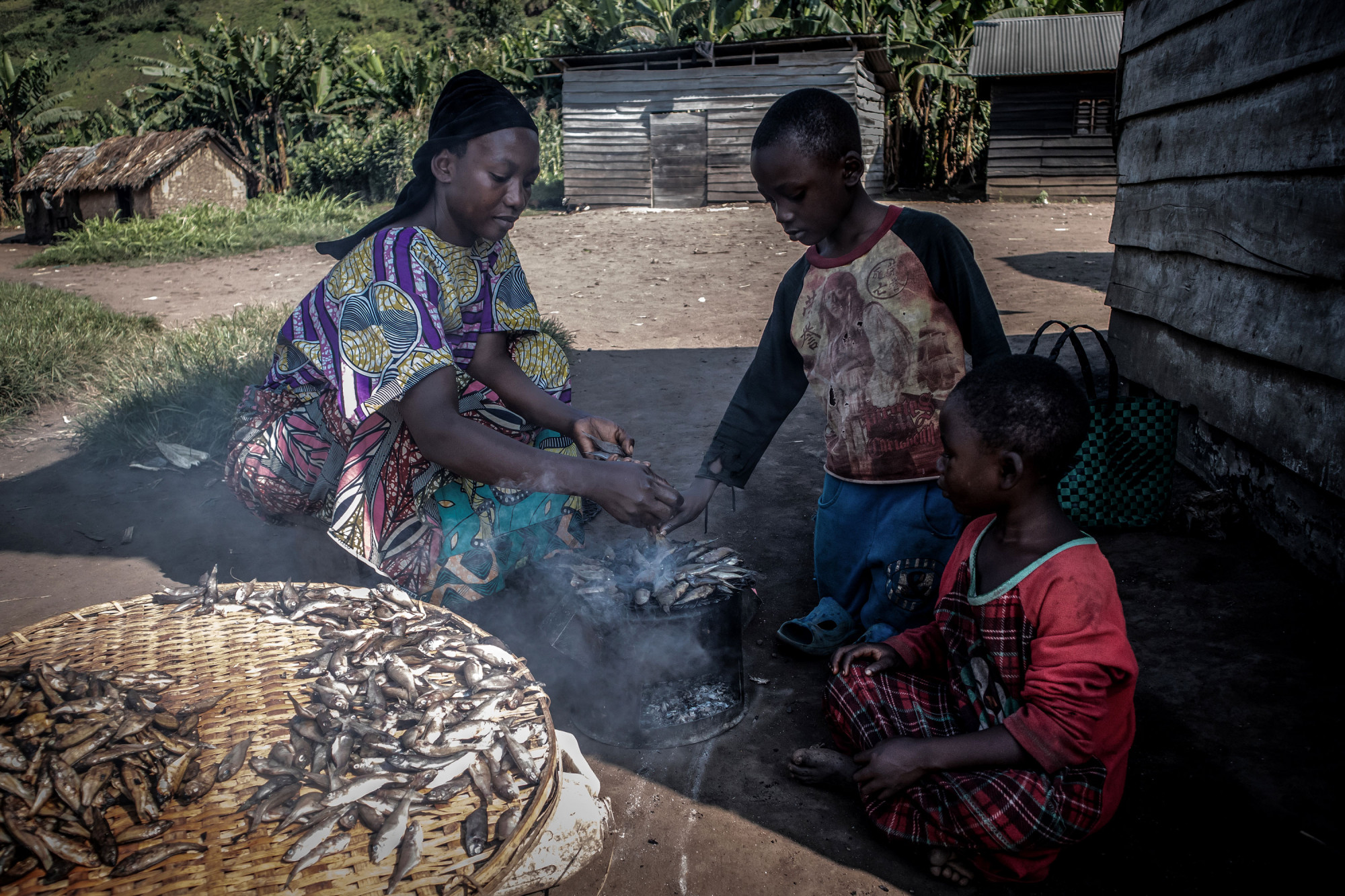

Virunga National Park, December 31, 2020
Reading time:
11 min
Then, with the dark outline of active volcanoes looming behind him, Suma lit a fire inside the smothered kiln to slow burn chunks of dense wood that would, over the course of several days, be turned into charcoal, or “makala” as it is called locally. The smouldering kiln was expected to produce three large sacks of about 50 kilograms of charcoal, each worth about $15-$20.
The father and son duo looked just like field workers the world over, carving out a meagre subsistence from the land surrounding their home village. But here in eastern Congo, on the fringes of Virunga National Park, they are just one small link in a complex and lucrative chain of illegal charcoal production that fuels not only cooking fires for the local population, but also conflict and widespread environmental destruction.
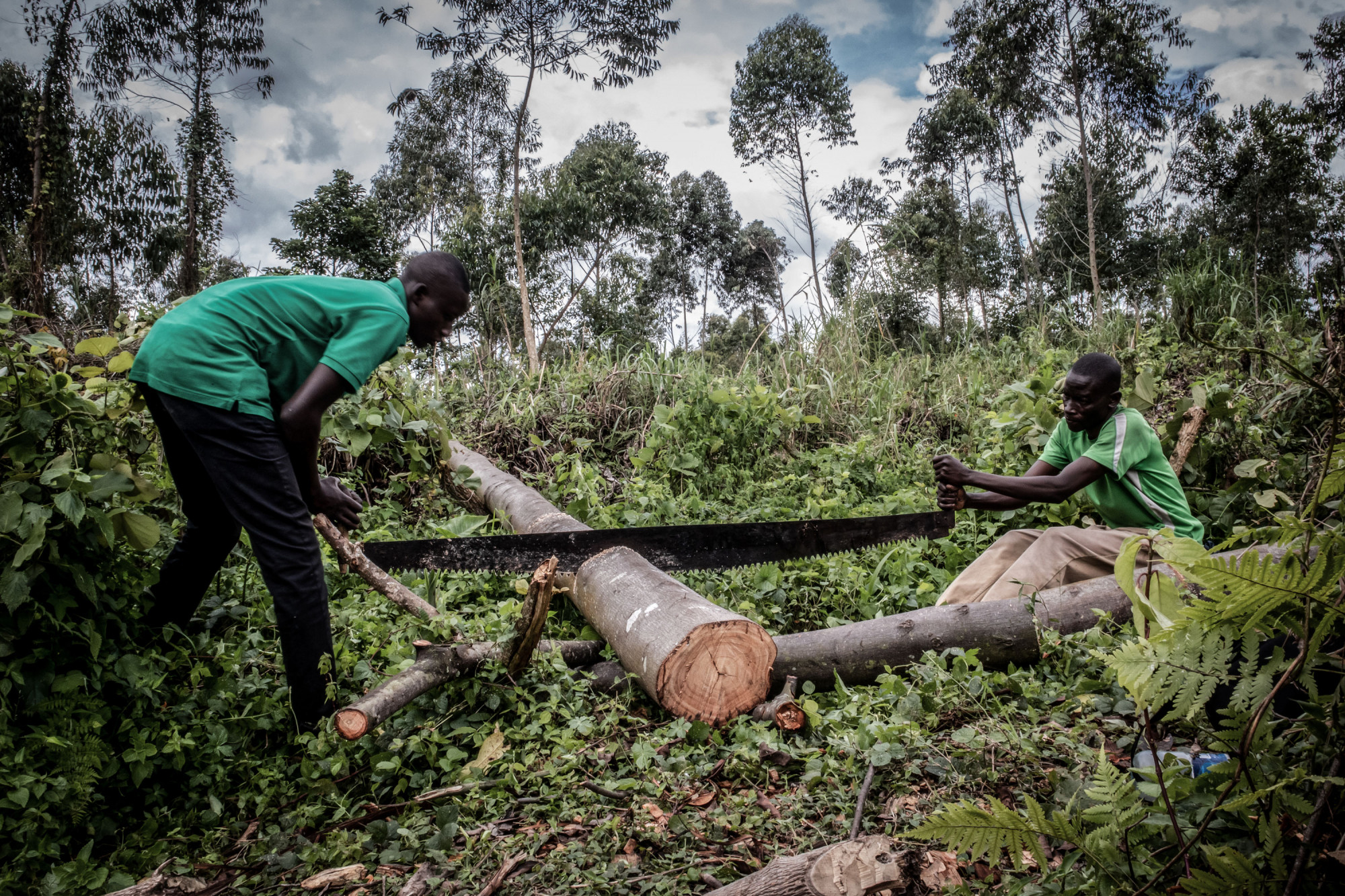
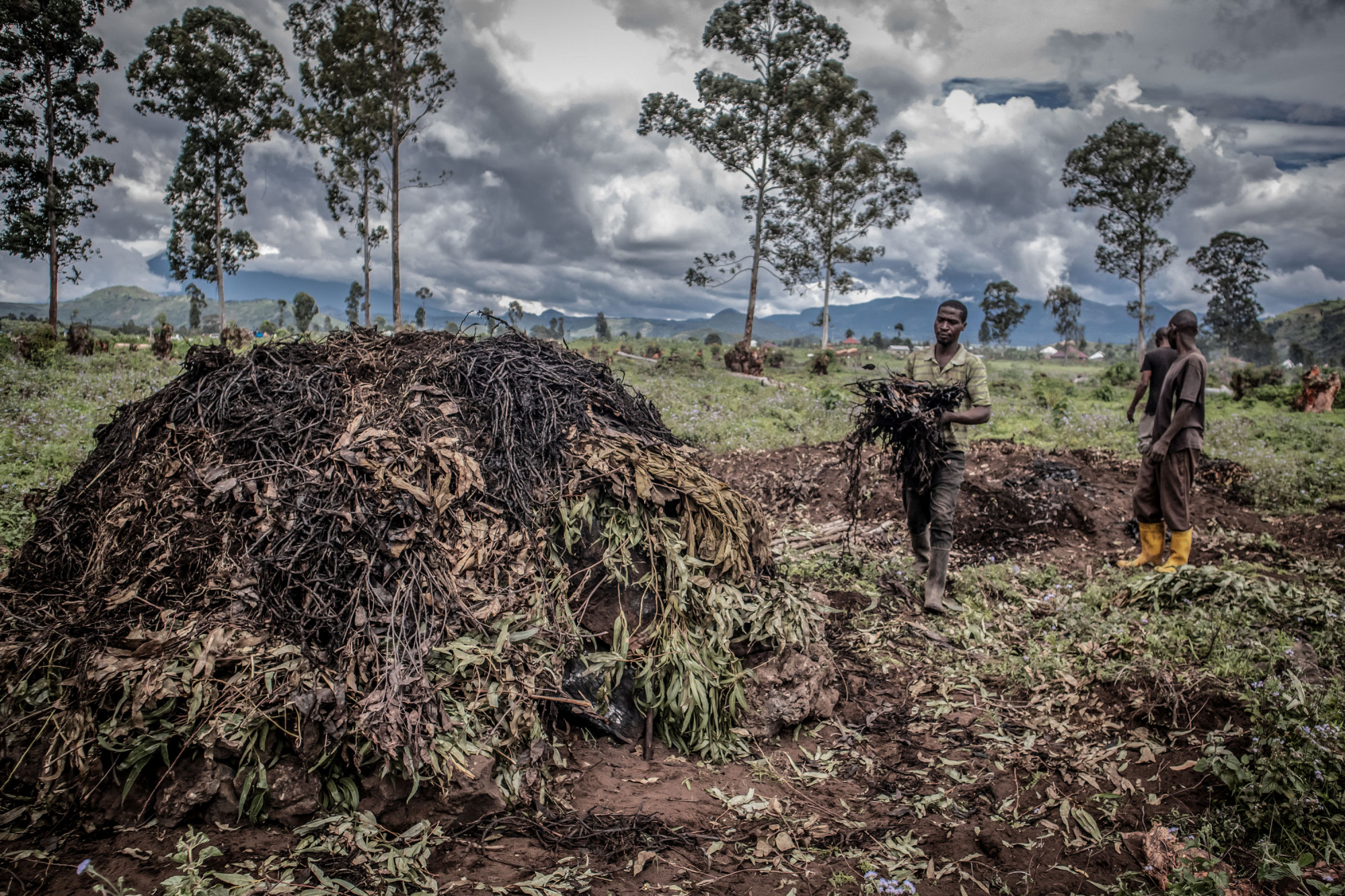
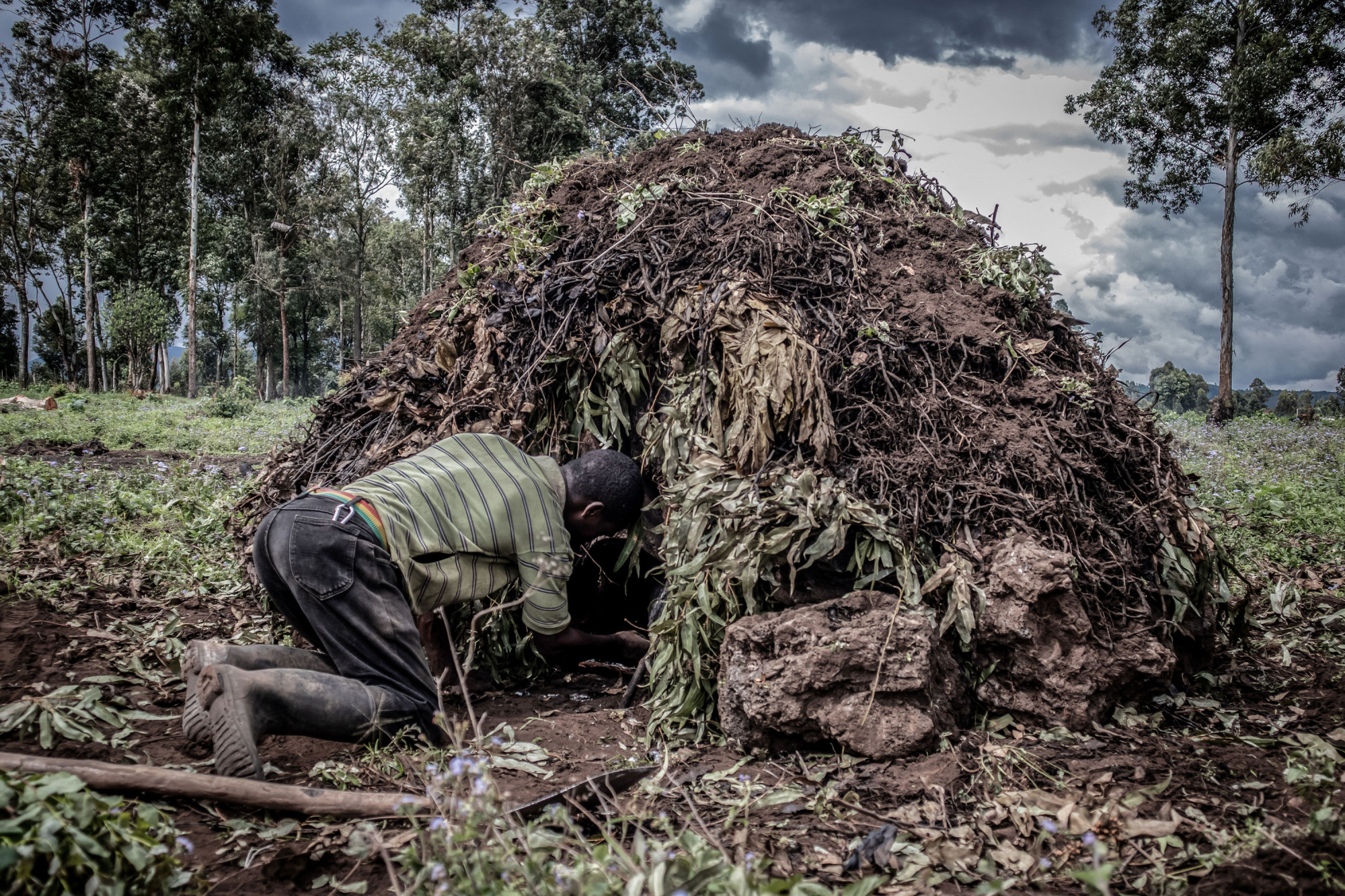


Eastern Congo’s illegal charcoal trade—worth around $35 million a year—is controlled by a criminal network of armed rebels and threatens Virunga’s forests while keeping the local population trapped between armed rebels and the militarized response by the local wildlife authority, the Congolese Institute for the Conservation of Nature (ICCN).
Covering some 7,770 square kilometers, Virunga National Park, established in 1925, is Africa’s oldest and most bio-diverse national park, a UNESCO world heritage site, and home to endangered mountain gorillas.
Various armed groups operate across eastern Congo, but Virunga is an especially fertile sanctuary for criminal enterprises, including wildlife poaching, fishing and other illegal commerce, much of it controlled by the Democratic Forces for the Liberation of Rwanda (FDLR), a rebel group linked to Rwanda’s 1994 genocide.
“For years, the group has helped sustain its activities by exploiting valuable natural resources, including minerals, ivory, fish, and marijuana,” according to a 2016 report by The Enough Project, a US policy group fighting to prevent genocide and atrocities, which referred to the FDLR as a “Mafia”. “But one of the FDLR’s most successful revenue-generating businesses is the illicit charcoal trade.”
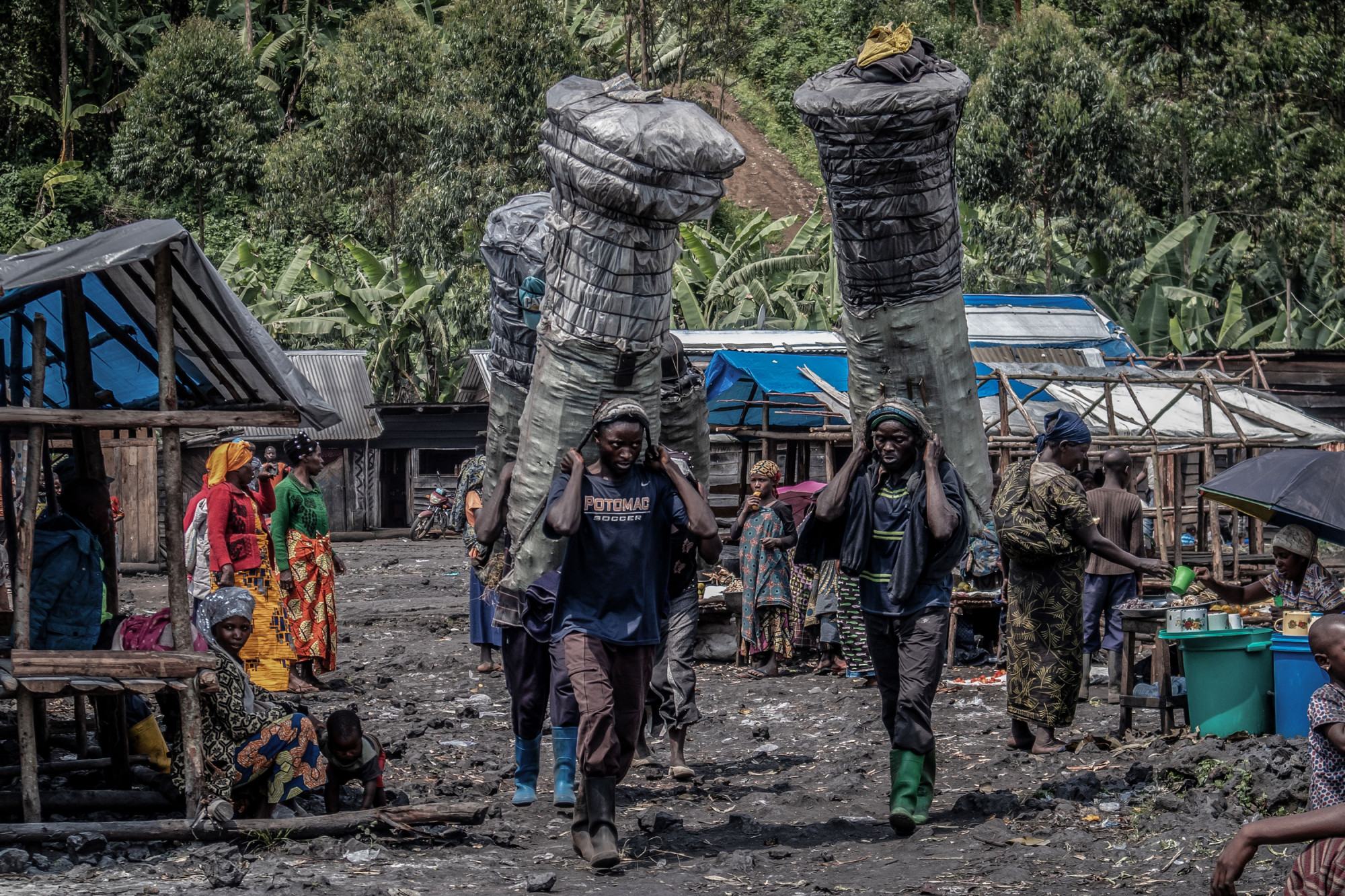

Congo has one of the lowest electrification rates in the world and millions of impoverished people in the region depend on charcoal as their only source of fuel for cooking daily meals. More than half of the charcoal consumed in nearby Goma, the capital of North Kivu Province, is illegally sourced inside Virunga, accelerating deforestation, according to the WWF.
To document the charcoal trade, I followed the whole process, from production in the park, to transport to market, and then to sale and further transport for use by consumers at the end of the supply chain. I was warned not to venture too far from where Suma and his father were working due to the threat of FDLR rebels nearby. After the trees are cut and baked into charcoal, the “makala” is transported to roadside markets on overloaded bicycles or motorbikes, or carried for hours on the backs of those who cannot afford wheels. From there, it is sold on to traders who transport it further afield. On the roads leading to Goma, trucks, motorcycles, and bicycles are often seen stacked with sacks of charcoal sourced from militia strongholds. Small traders on motorbikes might make $2 per 50-70 kilograms sack they buy, transport, and then resell in a city such as Goma, making for small margins of profit. The big money goes to the armed groups and government officials controlling the broader enterprise.
Traditionally, the FDLR controls loggers, charcoal burners and sellers, requisitions loggers, and can impose monthly taxes of between $5 and $25 per logger, threatening or sometimes killing those who do not comply.
Deforestation is not confined to eastern Congo. In the capital Kinshasa, 2,500 kms from Goma, residents consume five million tonnes of wood a year, according to French research group Cirad. Increasing urbanization is raising the pressure on the forests and on the hillsides around the capital, there are few trees remaining.
Congolese President Felix Tshisekedi has acknowledged the problem, saying last year that “Given the current rate of population growth and our energy needs, our forests may disappear by the year 2100.”
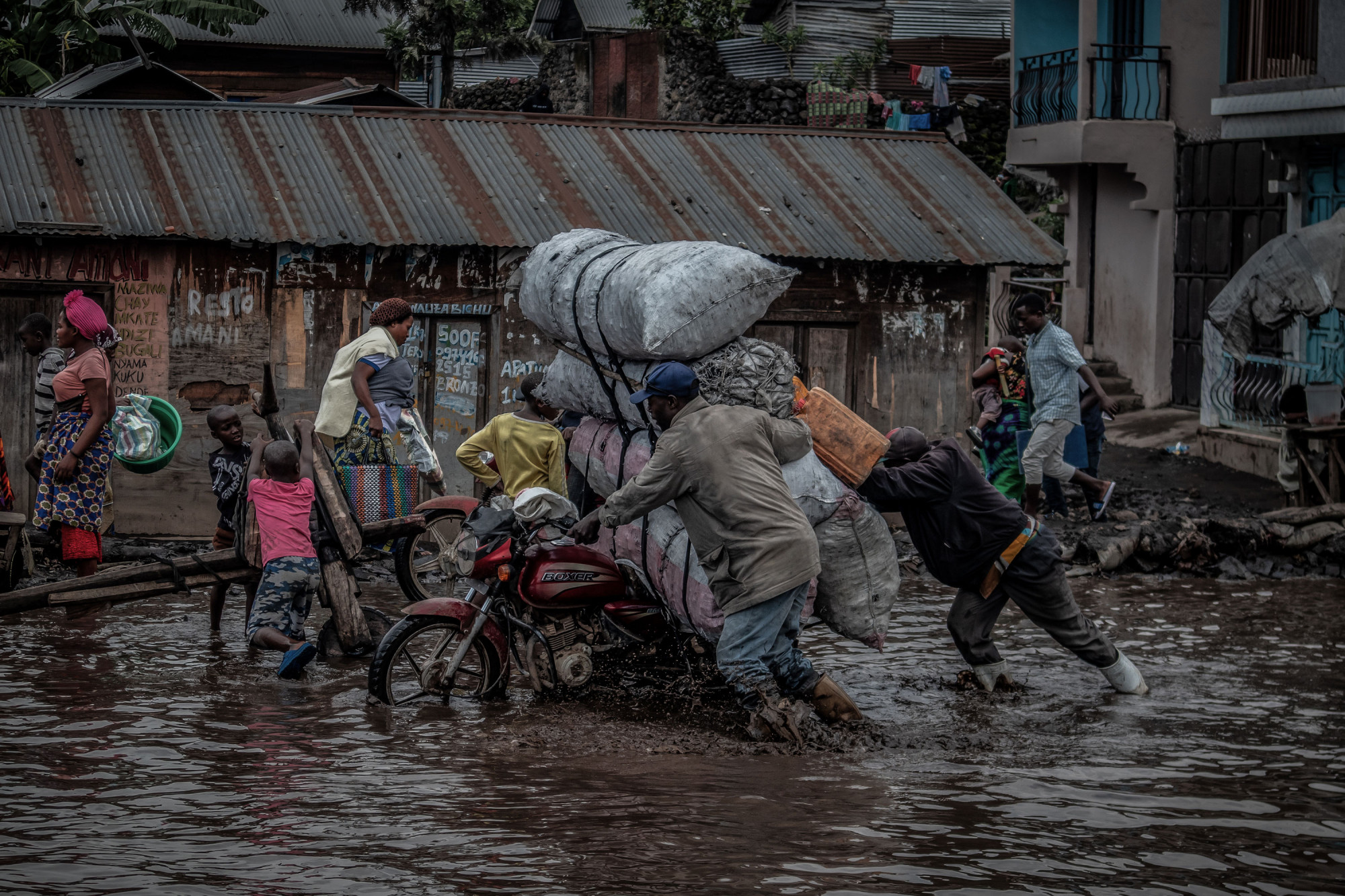
While the state has responded to the FDLR’s other illicit activities, such as mineral smuggling and elephant poaching, little has been done to tackle the charcoal trade, according to the Enough Project report, which flagged corruption and official complicity as one of the main reasons for inaction.
“Nursing alliances with Congolese army and police units and operating remote trafficking rings in the sanctuaries of Congo’s protected forests, the FDLR is a kingpin in Africa’s Great Lakes region’s organized crime networks and a continuing threat to human security,” the report said.
Park rangers often clash with armed groups in the park and dozens of rangers have been killed, including in one of the deadliest attacks ever in April, when 13 rangers and 4 civilians were killed.
While the narrative around such clashes typically pits the bad guys (the FLDR) against good guys (Virunga park rangers), such narratives ignore the deeper roots behind the violence, including conflicts over land, local disputes and ethnic animosity between Hutu and Nande communities in the area, as well as the government’s inability to demobilize armed groups, and the displacement of these groups as they relocate during offensives against them.
“Any attack against an armed group alters the fragile power equilibrium between armed groups, allied elite networks, and associated civilian communities which often have the same ethnic background as armed group leaderships,” according to Esther Marijnen and Judith Verweijen, who both did post doctoral research in the local communities. “Because populations depend on illegal revenue generation activities in the park, and no alternative livelihood activities are offered after the operations, people feel they have little choice but to solicit the protection of armed groups to re-access the park… Rising violence doesn’t only increase the insecurity of inhabitants, but also puts the lives of the park guards further at risk.”
This vicious cycle seems unlikely to end any time soon, though Congo this year launched an ambitious solar power project and Virunga Park has been building several new hydroelectric power stations to offset the need for charcoal. Still, much more will need to be done to address the full scope of the problem.
Alternative energy sources are only one of the recommendations made by The Enough Project. Additional proposed measures included improved law enforcement, domestic criminal accountability, international justice, military interventions, and demobilization efforts, few of which have been implemented since the 2016 report.
Until they are, Suma and his father, as well as many others like them, will continue their trade, and charcoal will continue fuelling fires, deforestation, and insecurity.
